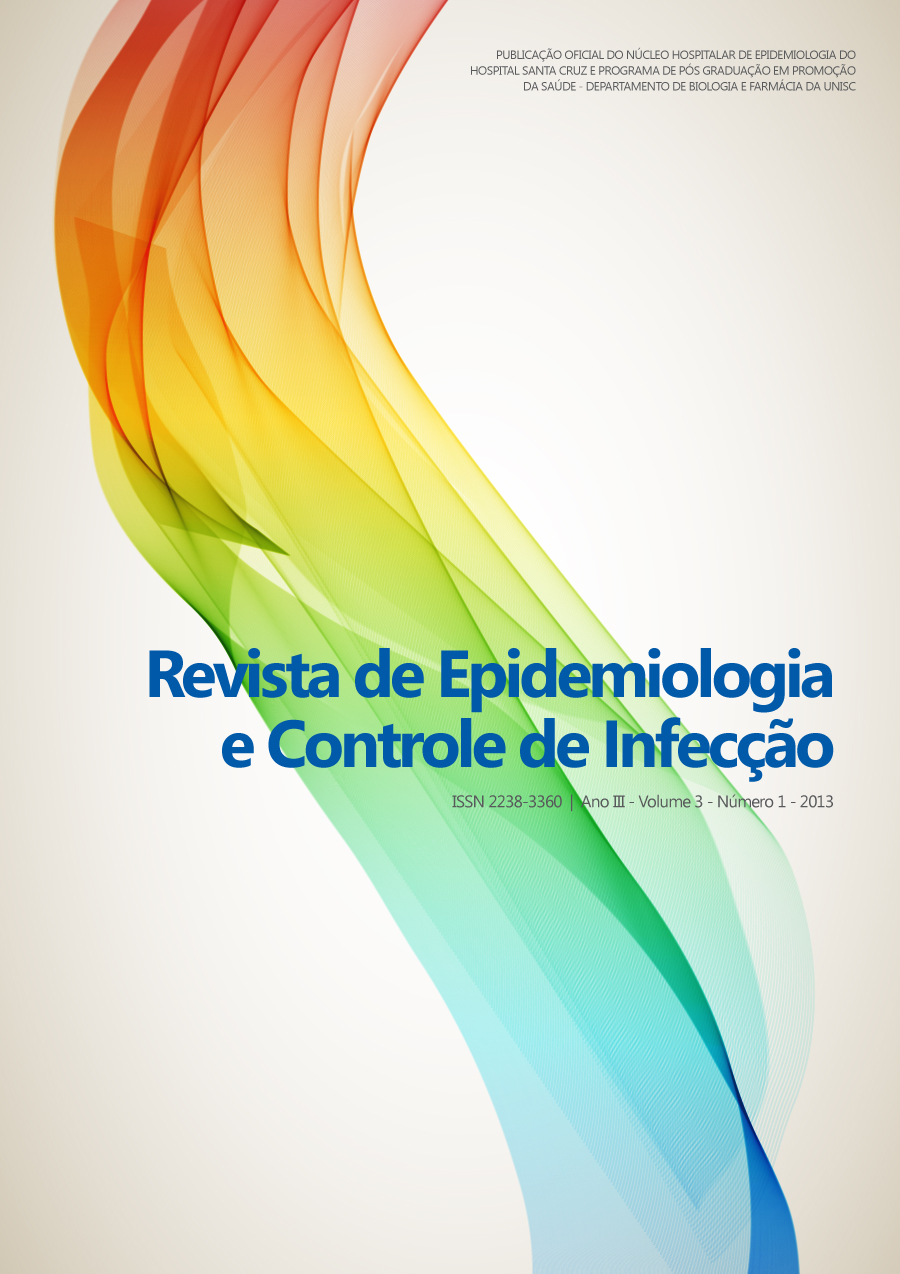Perfil epidemiológico da hanseníase no município de Guarulhos, SP
DOI:
https://doi.org/10.17058/reci.v3i1.3344Resumo
Justifi cativa e Objetivos: Necessidade de monitoramento contínuo na caracterização da tendência e magnitude da doença, avaliação de grupos populacionais mais atingidos, fortalecimento da vigilância epidemiológica e também como indicador da efi ciência dos programas de ação e controle atualmente em execução. Desse modo, o objetivo do estudo foi descrever o perfi l epidemiológico da hanseníase no município de Guarulhos, no período de 2004 a 2009. Métodos: Estudo descritivo, transversal e retrospectivo, com coleta de dados do período de 2004 a 2009, oriundos do Sistema Nacional de Informação de Agravos de Notifi cação (SINAN), Instituto Brasileiro de Geografi a e Estatística (IBGE), e do Departamento de Informática do Sistema Único de Saúde (DATASUS). Resultados: Foram notifi cados 282 casos de hanseníase no período de estudo. Resultando em uma detecção média de 3,72 casos/100.000 habitantes/ano. Observou-se a predominância de casos no sexo masculino, cor branca, faixa etária de 20 a 39 anos e escolaridade entre a 5ª e 8ª série do ensino fundamental incompleto. Grau de incapacidade tipo II foi detectado em 15,8% dos casos e a maioria dos pacientes eram multibacilar, pertencente às formas clínicas dimorfa e virchowiana. Conclusão: Indicadores de bom atendimento em relação a ações e serviços de atenção as incapacidades depois de detectadas, contrastam com a culminante proporção de pacientes que vem sendo diagnosticados com grau II de incapacidade física e o alto percentual de casos nas formas multibacilares. Assim, fazem-se necessárias mudanças no programa de controle e vigilância epidemiológica em vigor, objetivando diminuir a cadeia de disseminação da doençaDownloads
Downloads
Publicado
Como Citar
Edição
Seção
Licença
The author must state that the paper is original (has not been published previously), not infringing any copyright or other ownership right involving third parties. Once the paper is submitted, the Journal reserves the right to make normative changes, such as spelling and grammar, in order to maintain the language standard, but respecting the author’s style. The published papers become ownership of RECI, considering that all the opinions expressed by the authors are their responsibility. Because we are an open access journal, we allow free use of articles in educational and scientific applications provided the source is cited under the Creative Commons CC-BY license.


